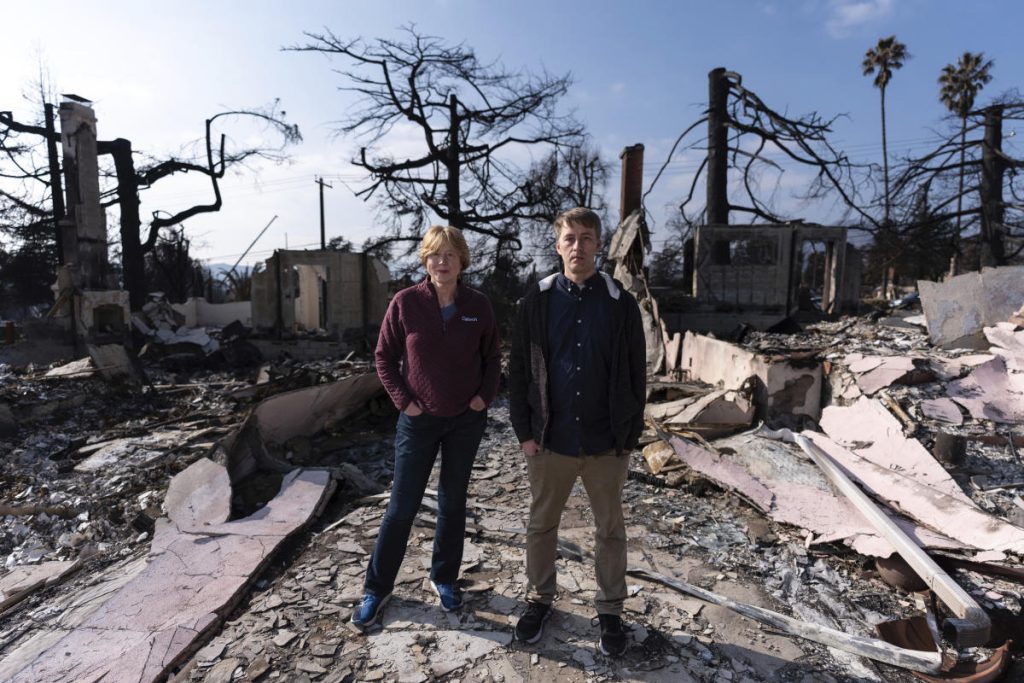
Before a wildfire ravaged their street in northwest Altadena, Louise Hamlin and Chris Wilson lived next door to each other in nearly identical houses.
“I chose an old home in an old neighborhood because it has soul,” said Hamlin, a 51-year-old single mom with a teenage boy, who bought her 1,500-square-foot home 10 years ago.
Today, gone are their charming English-style cottages built in 1925 with the welcoming porches and Palladian windows. Amid the rubble and ash, little is left of their historic neighborhood.
In the weeks since the Eaton wildfire took their homes, Hamlin and Wilson have been stumbling through the layers of business, bureaucracy and emotional trauma of surviving a natural disaster, with their sights firmly set on rebuilding.
How they’ll navigate rebuilding is a story of contrasting fortunes and unequal recovery that reveals the nation’s growing home insurance crisis. Her insurance has already paid out nearly a million dollars and she is searching for contractors. He is contemplating loans, lawsuits and moving his family out of California.
“It changes the whole trajectory to your life,” said Wilson, 44, who bought his house five years ago with his wife, who is six months pregnant with their first child.
Hamlin’s home was privately covered by Mercury Insurance, but Wilson was forced onto the California Fair Access to Insurance Requirements Plan — the state’s bare-bones insurance program — when SafeCo declined to renew his policy last May. The FAIR Plan insures people who can’t get private coverage but need insurance as a condition of their mortgage.
State officials recently started rolling out new regulations to entice insurers to stay in California, with the hope of getting as many homeowners as possible off the FAIR Plan.
FAIR, with its high premiums and basic coverage, was designed as a temporary safety net until policyholders find a more permanent option. Yet the number of FAIR Plan residential policies more than doubled from 2020 to 2024, reaching nearly 452,000 policies last year.
For Wilson and Hamlin, their parallel rebuilding journeys serve as a cautionary tale. Wilson paid nearly 60% more in premiums related to the fire than Hamlin, for less than half the coverage.



